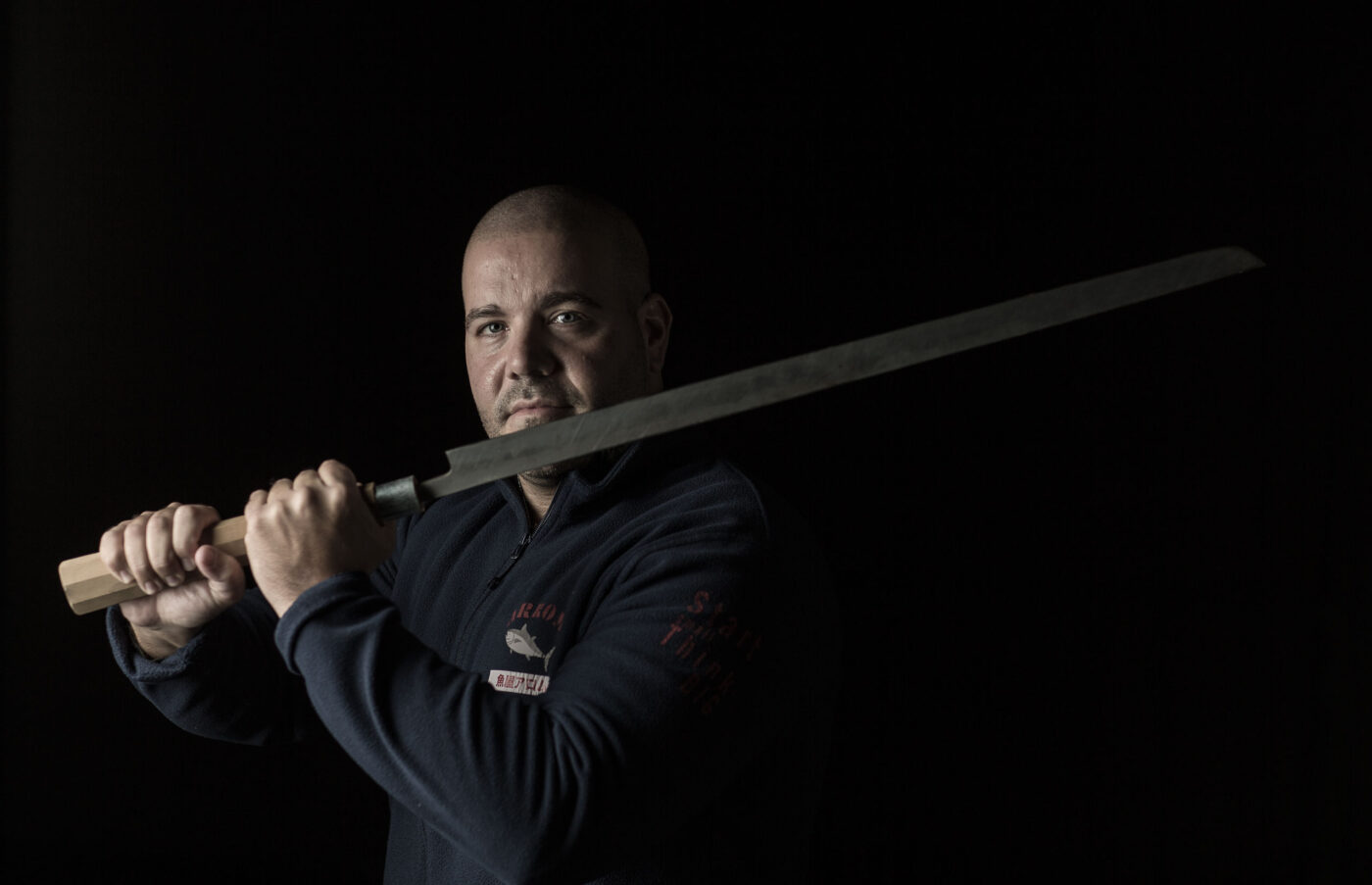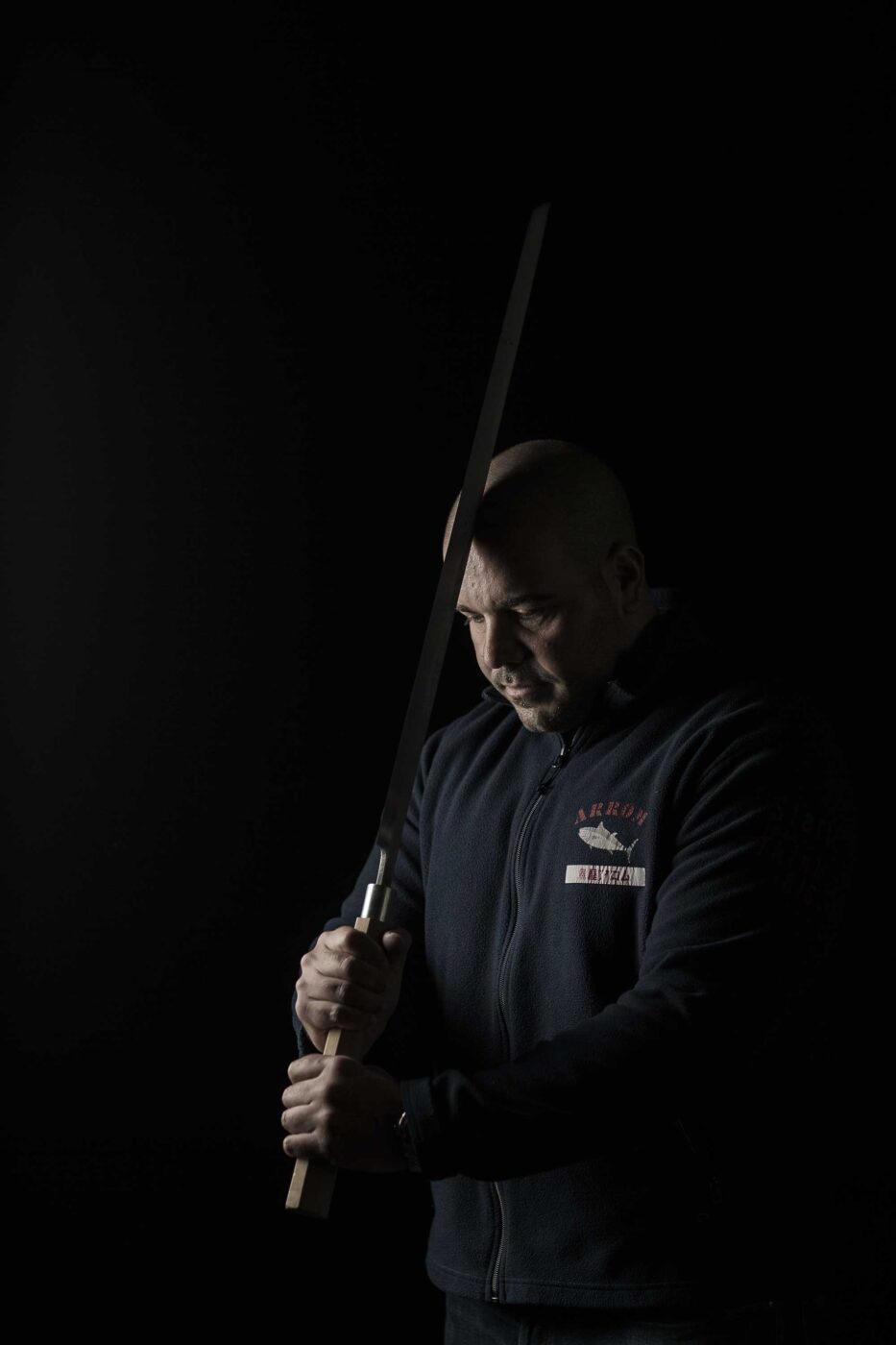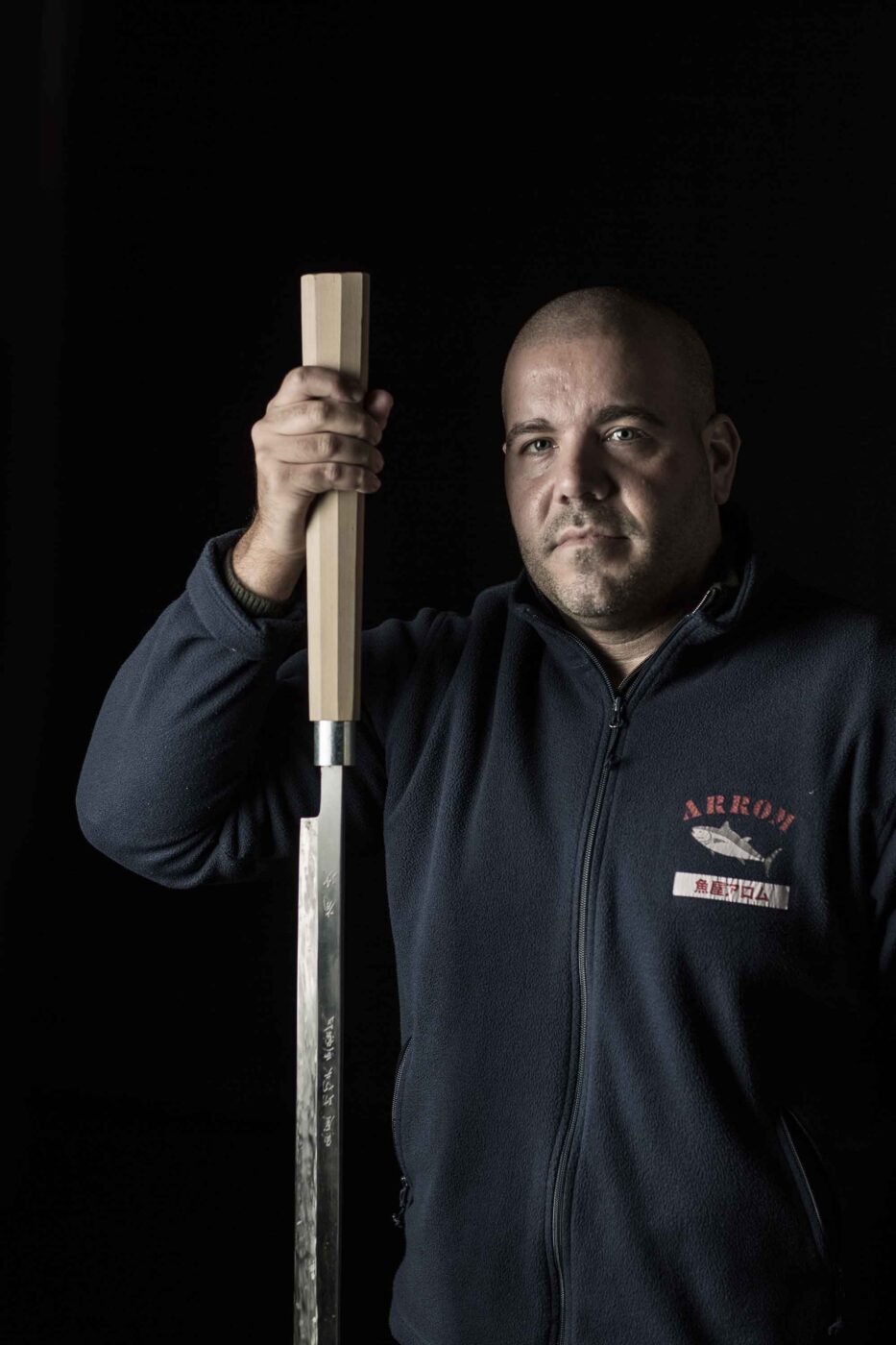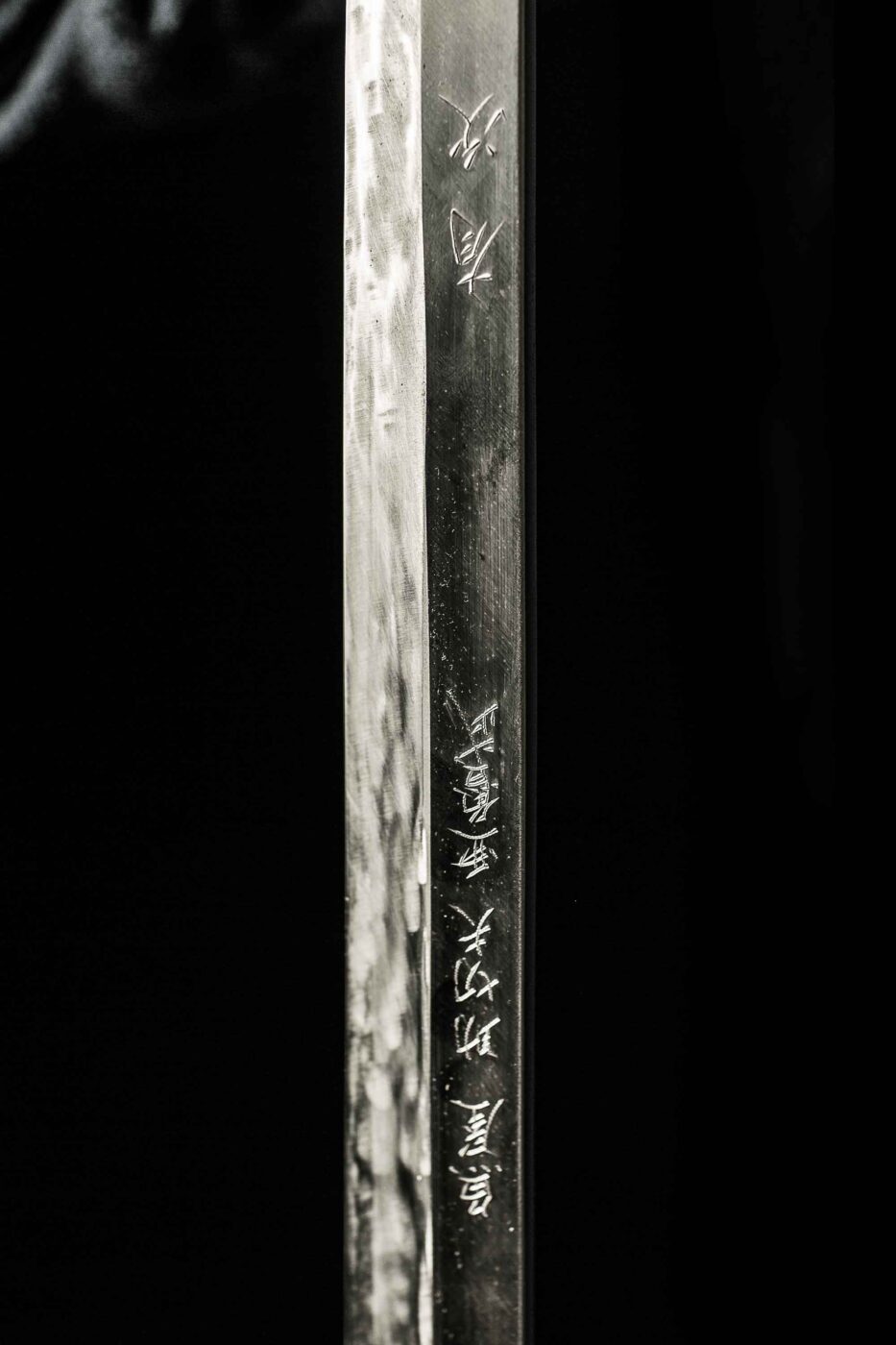Arrom… Face-to-face with a samurai from Barcelona
Summary:

A logbook by Sensei Hiroshi Umi.
“They cost me a fortune. I can’t imagine what they would be worth now. Without telling me anything, they had the courtesy to engrave my and the company’s name on the blade in the centuries-old kanji writing system. They were forged by a craftsman from Tokyo who makes katanas to order. I will have them framed to put them in pride of place in my next office. Watch out – you could cut yourself just looking at them”.
With reverence, like a mediaeval knight imbued with respect and ritual, our samurai passes me the huge knives, flexible as bamboo and lethal as a broken heart. Before the photo shoot, Josep Comas Arrom is on the phone to Sri Lanka and Mexico. As well as a contact in Senegal. And Cartagena, of course: Fuentes El Atún Rojo is always in his thoughts as a supplier.
A dynasty of fishermen
His deforested and photogenic head, which gives free rein to his plainly structured thoughts, spins out a historical narrative of a consummate fisherman, fishmonger, dealer and merchant, full of praise for the very finest tuna, even if it has to be dragged against the tide from the remotest oceans.
“I come from a dynasty of fishermen, yes… Oddly enough, my roots on my mother’s side are in Cartagena, where one of our suppliers, Fuentes, is based, and then the essential product for our business, namely tuna, covers quite some distance to spawn in the Balearics, which is where the name Arrom comes from. My great-grandmother was a travelling fishmonger during the post-war period, which gave my grandmother the chance to take up a permanent stall at the Santa Catarina market in Ciutat Vella, El Born, which she subsequently passed on to my mother. I mean it was a market stall table measuring barely a metre and a half. She only sold swordfish and tuna. From the 1980’s onwards, the range of fish expanded. Today we have all sorts. We deal with unusual produce, and look for new ideas to feed the imagination of the finest chefs,” explains Josep, with determination and a sparkle in his eyes.
First tuna butchery at the age of 13
As a growing lad with his mind set on a working apron, from the age of 14 he knew that he would dedicate his heart and soul to a hugely gruelling world that smells of brine and crushed ice carpeting the floor. And he made it thanks to a parental scheme which turned out backfiring. As Josep was behaving badly at school, his parents decided to punish him by getting him up at three in the morning to drag him, yawning and eyes gummed half-shut, to the wholesale market at Mercabarna, so as to put him off the idea of such a tough way of life. The punishment turned into a reward. And a realisation. Young Josep became one with the sea and its treasures. He found his path in life alongside Mani, his friend in this saga. He offloaded trucks. He set up the stall. Signs and prices. He sold the produce. He took out the trash. He learned everything. To perfection.
Over time he became a medium, seeking, sniffing out, searching time and time again, finding and purveying. Always with his eye on the very finest, most succulent tuna. He butchered his first at the age of just 13. “In the olden days in Barcelona they would cut the tuna up into three big slices and remove the loins, rather than butchering the whole fish like now. They used conventional fishmonger’s knives, and the tuna was cut up on a wooden board on the floor in front of the market stall. All very rudimentary and traditional. When she saw me with the knife, my mother thought I would break the fish up. I did it properly because I had spent a long time watching. That is the key. And after that, I would butcher tuna every Saturday. We had a Nissan Vanette with a pillow in the middle to have a quick snooze. I’ve just turned 39. It’s been 25 years already…,” he works out.
Since then, hundreds and thousands of cuts of loin and belly have passed through Josep’s huge, quick and careful hands. He sees tuna butchery “as a job, not as a show”. Frank and direct when he speaks, his eyes sparkle when the conversation turns to Japan. He says that he loves our codes, our philosophy, our effort, the respect that many of my compatriots give to their ingredients, grateful for the slightest donation offered by mother nature, however cheap the product, even if not culinary in nature. “When I go to Tokyo I feel like a kid going to Disneyland. The first time I went to the now-defunct Tsukiji market, accompanied by a wonderful teacher and fishmonger named Matsuda San,” he recalls.

Arrom and Fuentes, a synergy with broad horizons
Honest and noble as the day is long, Josep Comas Arrom and Fuentes El Atún Rojo today enjoy an entente cordiale, a synergy of broad horizons. “In my case we aim to continue expanding the wholesale stalls we have at Mercabarna and to work with the finest restaurants in Spain and abroad”.
“In the case of farmed tuna, we expect to continue working with Fuentes for many years. They are world leaders for a reason. When I was in Cartagena I was impressed by the company’s potential, and surprised how committed they were in the painstaking care taken with how the tuna are fed. Because it’s all about the flavour, not the colour. Remember: we are what we eat. With their farmed tuna, Fuentes don’t overdo it with the sardines. They also give them herring, mackerel, squid… Which is what the Japanese market demands. And that is why we decided to work with them. And also because of their proximity and their personal approach, their humility. It’s a bond which has given rise to friendship and respect, and, why not, growth and mutual admiration,” reflects the man who has established the Arrom brand in 20 countries.
En Arrom no cabe la impostura ni el disfraz. No valen medias tintas. El mejor atún del mundo. Donde se encuentre. En ellos se afana el hombre que parece susurrarles a unos centímetros de la parpatana…
Hiroshi Umi


